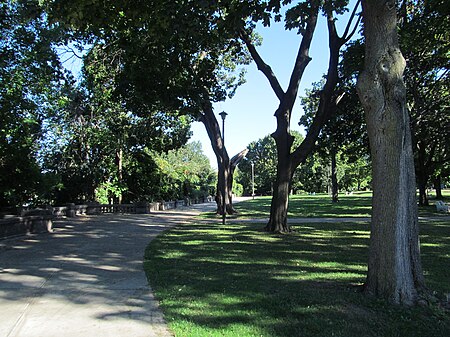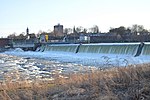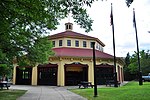Pulaski Park (Holyoke, Massachusetts)
Geography of Holyoke, MassachusettsNational Register of Historic Places in Hampden County, MassachusettsParks in Hampden County, Massachusetts

Pulaski Park is a city park along the Connecticut River in Holyoke, Massachusetts. Originally called Prospect Park when it was laid out in 1884, it was given its present name in 1939 in honor of American Revolutionary War hero Casimir Pulaski, for whom there is a memorial in the park's center. The original 5.1-acre (2.1 ha) park was designed by the Olmsted Brothers landscape design firm.
Excerpt from the Wikipedia article Pulaski Park (Holyoke, Massachusetts) (License: CC BY-SA 3.0, Authors, Images).Pulaski Park (Holyoke, Massachusetts)
Arbor Way, Holyoke
Geographical coordinates (GPS) Address Nearby Places Show on map
Geographical coordinates (GPS)
| Latitude | Longitude |
|---|---|
| N 42.211944444444 ° | E -72.605833333333 ° |
Address
Arbor Way 6;8
01040 Holyoke
Massachusetts, United States
Open on Google Maps










